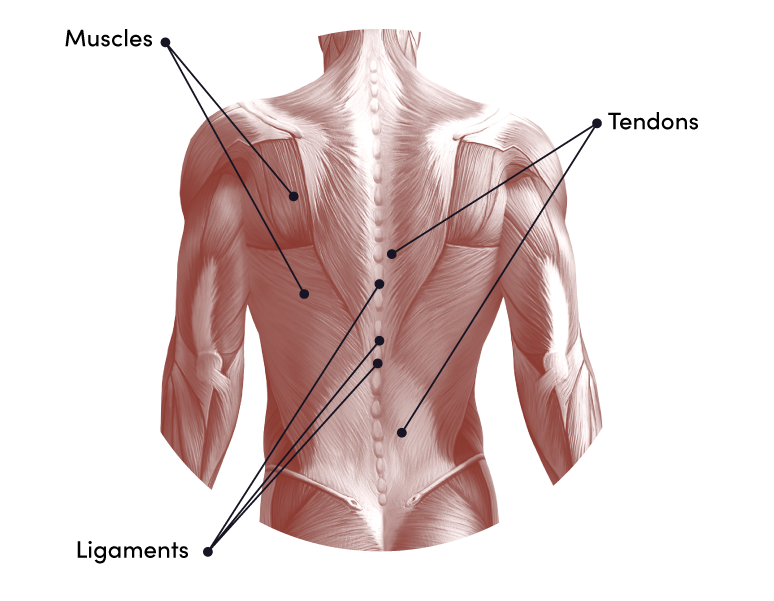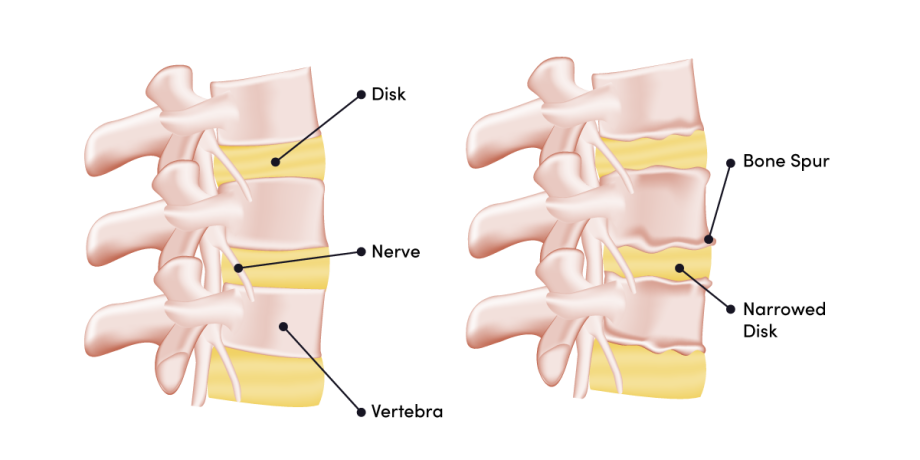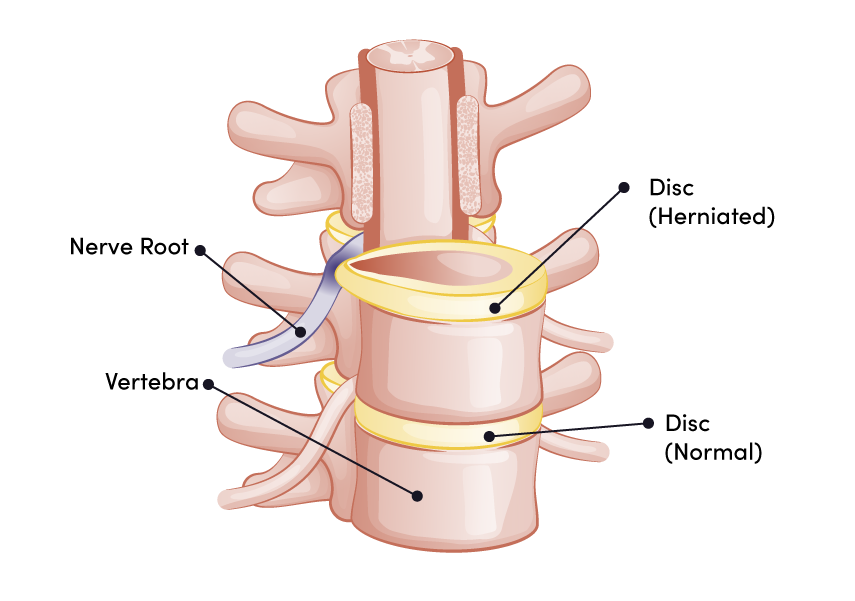Low Back Pain Basics
Low back pain is common. In fact, thirteen percent of adults in the United States have long-term (chronic) low back pain. In the U. S., it is also the leading cause of disability - i.e. it interferes with movement and daily activities.
The Lower Back
The anatomy of the lower back is a complex arrangement of the lumbar spine and many surrounding structures. Your:
Lumbar spine itself includes five bones (vertebrae) and cushions between the bones (discs)
Spinal canal and spinal cord are located within the spine from the brain to the lower back
Nerve roots connect the spinal cord to the spinal nerves which extend out into the body
Ligaments, muscles, tendons, and fasciae provide support
Your lower back supports the weight of your upper body and maintains your upright position. At the same time, it is flexible, allowing you to bend, straighten, twist, and turn from side to side.
Acute Versus Chronic
Your low back pain may be short-term (acute) or it may be long-term (chronic). Acute back pain lasts less than four weeks and chronic back pain lasts longer than twelve weeks (Low back pain may also be classified as sub-acute, which is pain that lasts from four to twelve weeks ).
Symptoms, causes, and treatment may be similar, however acute back pain goes away (sometimes without treatment). When it doesn’t, it becomes sub-acute and possibly chronic.
Risk Factors
Your risk of developing low back pain increases with the following factors:
Physically difficult work, e.g., heavy lifting
Weak belly (abdominal) and back muscles
Extra body and abdominal weight
Smoking
Increased stress, depression
Increasing age
Common Causes
Often, the exact cause of low back pain is unknown and is treated based on symptoms. The most common causes are: strains and sprains, accidents or injuries, osteoarthritis, and disc herniation.
A strain is a stretch or tear of one of the muscles or tendons (attach muscles to bones) of the lower back and a sprain is a stretch or tear of a ligament (attach bones to other bones or joints).

Accidents or injuries may result in strains or sprains, or other damage to lower back structures. You may injure your lower back from: a slip or quick movement; improper bending, lifting, or twisting; overuse; or underuse.
Osteoarthritis (OA) is due to damage to the cartilage, the spongy tissue that protects the ends of your bones where they meet - i.e. your joints. It commonly affects the discs, the cartilage between the bones, of the lumbar spine. It often results in narrowing of the joint spaces and the formation of small areas of bone overgrowth (bone spurs).

Disc herniation (also called slipped, bulging, or ruptured discs) means one of the discs is out of its normal position. When this happens the disc may press on nearby nerve roots or the spinal cord. Herniated discs are most common in the lumbar spine.

Some other causes of low back pain are less common and more serious, including: infection, fracture, or cancer.
Diagnosis
Low back pain is usually diagnosed by explaining your symptoms and reviewing your medical history. If you see your doctor, they will also examine your back. Unless serious symptoms are present, tests aren’t necessary.
Treatment
The treatment for most low back pain is similar, regardless of the cause. It includes:
Staying active
Exercise therapy
Medicines and supplements
Heat and ice treatments
Lifestyle changes (e.g. diet, smoking cessation, etc.)
Relaxation and stress reduction techniques
Injections, surgery, or other procedures are needed only in certain situations.
Prevention
Although they may be challenging, there are measures to prevent low back pain, or to help prevent it from recurring. You should:
Stay active
Keep a healthy weight
Follow a Mediterranean diet
Aim to reduce stress and increase relaxation
Use your back correctly
Avoid back-harming sleep positions
Wear comfortable, well-fitting shoes
Quit smoking, if you smoke
Summary
Your lower back supports the weight of your upper body and maintains your upright position. At the same time, it is flexible, allowing you to bend, straighten, twist, and turn from side to side
Acute back pain lasts less than four weeks and chronic back pain lasts longer than twelve weeks
Common causes are strains and sprains, accidents and injuries, and osteoarthritis
Tests to diagnose low back pain are usually unnecessary
Treatment of low back pain includes exercise therapy, medicines and supplements, mind-body techniques, and diet/healthy weight
Stay active, keep a healthy weight, use your back correctly, and stop smoking (if you smoke) to prevent low back pain
For More Information
American Association of Neurological Surgeons (AASN). Low Back Pain (2021). Retrieved 7-23-2021 from https://www.aans.org/en/Patients/Neurosurgical-Conditions-and-Treatments/Low-Back-Pain.
National Institute of Arthritis and Musculoskeletal and Skin Diseases (NIAMS). Back Pain (2019). Retrieved 7-23-2021 from https://www.niams.nih.gov/health-topics/back-pain.
National Institute of Neurological Disorders and Stroke (NINDS). Low Back Pain Fact Sheet (2020). Retrieved 7-23-2021 from https://www.ninds.nih.gov/Disorders/Patient-Caregiver-Education/Fact-Sheets/Low-Back-Pain-Fact-Sheet.